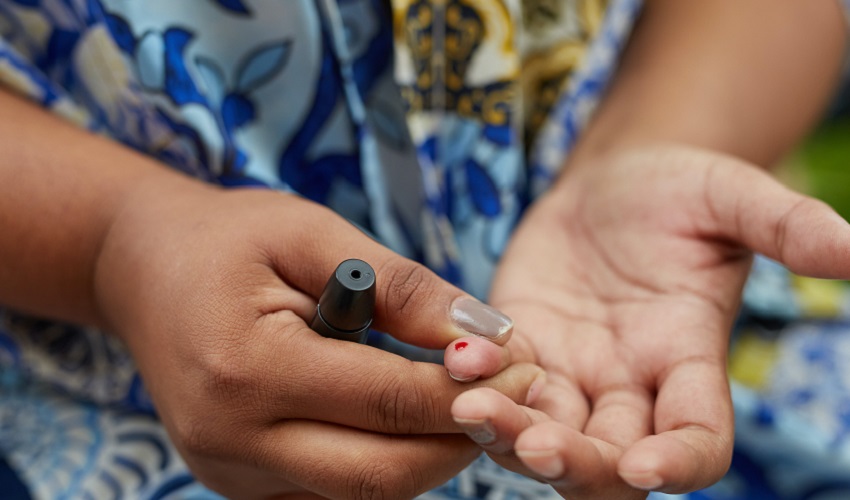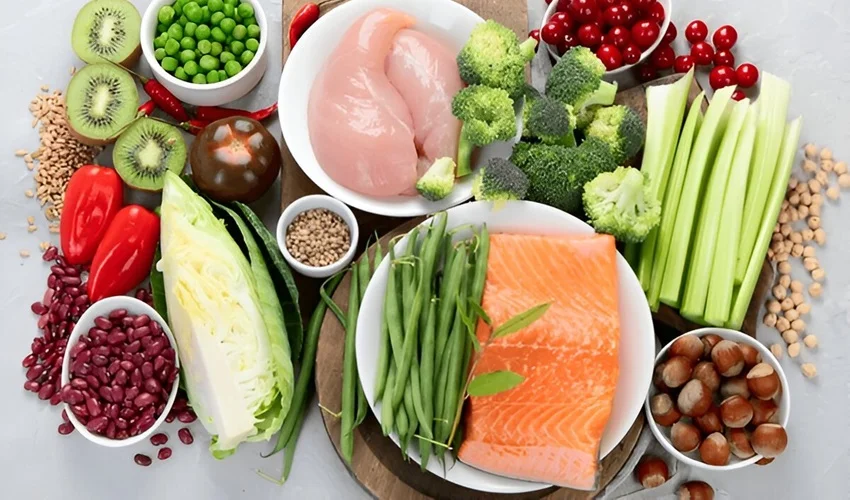Traveling can be an exciting experience, but for individuals with diabetes, it also presents challenges when it comes to maintaining a healthy diet. Managing blood sugar levels while on the go requires careful planning and making informed food choices. This article aims to provide diabetic patients and their caregivers with valuable insights into finding diabetes-friendly food options while traveling. By following the practical tips and guidelines outlined below, individuals with diabetes can enjoy their travels while keeping their blood sugar levels in check.
Understanding Diabetes and Dietary Needs
Diabetes is a chronic condition that affects the body’s ability to regulate blood sugar levels. There are two main types of diabetes: type 1 and type 2. Type 1 diabetes is an autoimmune disease in which the body does not produce insulin. Type 2 diabetes occurs when the body becomes resistant to insulin or doesn’t produce enough of it. In both types, managing blood sugar levels through diet and lifestyle is crucial for overall health and well-being.
Importance of a Balanced Diet for Diabetic Patients
A balanced diet plays a vital role in managing diabetes. It helps control blood sugar levels, maintain a healthy weight, and reduce the risk of complications. A diabetes-friendly diet typically includes a variety of nutrient-rich foods such as fruits, vegetables, whole grains, lean proteins, and healthy fats. It is important to limit the intake of sugary and processed foods that can cause blood sugar spikes.
Pre-Trip Preparation
Consultation with Healthcare Provider, before embarking on a trip, it is essential to consult with a healthcare provider, especially for individuals with diabetes. Discussing travel plans and receiving personalized guidance can help address any specific concerns or considerations related to the journey. Healthcare providers can provide advice on adjusting medications, insulin dosage, and managing blood sugar levels during travel.
Planning Meals and Snacks
Researching Local Cuisine: Researching local cuisine ahead of time can help individuals with diabetes identify food options that align with their dietary needs. Learning about traditional ingredients, cooking methods, and common dishes can assist in making informed choices while exploring new culinary experiences.
Packing Diabetes-Friendly Snacks: Packing diabetes-friendly snacks is crucial to avoid situations where suitable food options may be limited or unavailable. Portable snacks such as nuts, seeds, whole fruit, low-sugar granola bars, and sugar-free crackers can provide a quick and convenient source of nutrition while on the go.
Eating at Restaurants
Making Smart Menu Choices
Reading Menus Carefully: When dining at restaurants, it is important to carefully read the menus and pay attention to the descriptions of dishes. Look for keywords that indicate healthier cooking methods such as grilled, baked, steamed, or roasted. Avoid menu items that are described as fried, breaded, creamy, or glazed, as these tend to be higher in unhealthy fats and added sugars.
Identifying Healthy Ingredients and Cooking Methods: Choose dishes that include plenty of vegetables, lean proteins, and whole grains. Opt for foods prepared with minimal added fats or sauces. Request dressings, sauces, and gravies to be served on the side, allowing you to control the portion and reduce added sugars and unhealthy fats.
Portion Control and Sharing
Restaurant portion sizes are often larger than necessary, leading to overeating and potential blood sugar spikes. Consider sharing a meal with a travel companion or ask for a to-go container to pack half of the meal for later. This strategy helps control portion sizes and ensures that you consume an appropriate amount of food.
Requesting Modifications
Don’t hesitate to request modifications to suit your dietary needs. Ask for substitutions such as steamed vegetables instead of French fries or a side salad instead of mashed potatoes. Most restaurants are willing to accommodate special requests, so be polite and clear about your dietary requirements.
Beverages and Alcohol Considerations
Be cautious when choosing beverages, as many sugary options are available. Opt for water, unsweetened tea, or diet sodas instead of sugary soft drinks or fruit juices. If you choose to consume alcohol, do so in moderation and be aware of its impact on blood sugar levels. Avoid sugary cocktails and opt for light beer, dry wines, or spirits mixed with sugar-free mixers.
Navigating Airports and Traveling by Plane
Carry-On Snacks and Meals
When traveling by plane, it’s a good idea to pack diabetes-friendly snacks and meals in your carry-on luggage. This ensures that you have access to suitable food options even if the in-flight offerings don’t meet your needs. Consider packing items such as unsalted nuts, individual portions of low-fat cheese, whole grain crackers, and cut-up vegetables.
Special Meal Requests
Most airlines offer special meal options, including diabetic or low-sugar meals. Requesting a diabetic meal when booking your flight can provide you with a meal tailored to your dietary needs. However, it’s important to check the meal content and confirm that it aligns with your individual requirements.
Managing Insulin and Medications
If you take insulin or other medications, ensure you have an adequate supply for the duration of your trip. Carry your medications and supplies in your carry-on luggage to prevent any issues in case checked bags are delayed or lost. Keep medications in their original packaging with clear labels to avoid any confusion or questions at security checkpoints.
Staying Active During Long Flights
Sitting for long periods during flights can lead to poor blood circulation and affect blood sugar levels. Stay active by stretching, walking around the cabin, or performing simple exercises while seated. Check with your healthcare provider before the flight for specific recommendations based on your individual needs.
Eating on the Road
Healthy Options at Convenience Stores and Gas Stations
When making pit stops during road trips, it can be challenging to find healthy food options. However, many convenience stores and gas stations now offer healthier choices. Look for fresh fruits, pre-packaged salads, yogurt, unsalted nuts, or protein bars with low sugar content. Avoid high-sugar snacks, sugary beverages, and processed foods.
Packing a Cooler for Road Trips
Preparing a cooler with diabetes-friendly foods and drinks is an excellent strategy for road trips. Pack items such as pre-cut vegetables, hummus, low-fat cheese sticks, hard-boiled eggs, and plenty of water. This allows you to have healthy options readily available and reduces the temptation to rely on less suitable alternatives.
Making Wise Fast Food Choices
- Opting for Grilled or Baked Items When stopping at fast-food restaurants, choose grilled or baked options instead of fried items. Grilled chicken, fish, or lean burgers without the bun can be healthier choices. Avoid fried chicken, breaded items, and anything described as crispy or crunchy, as these tend to be higher in unhealthy fats and calories.
- Avoiding High-Sugar Condiments and Sauces Condiments and sauces can significantly impact blood sugar levels. Opt for mustard, hot sauce, or vinegar-based dressings instead of ketchup, barbecue sauce, or sweet dressings. These alternatives have fewer added sugars and can help keep blood sugar levels more stable.
Exploring Local Markets and Grocery Stores
Selecting Fresh Fruits and Vegetables
Visiting local markets and grocery stores allows you to explore fresh and nutritious options. Choose a variety of colorful fruits and vegetables that are in season. These provide essential vitamins, minerals, and fiber while being low in calories and high in nutrients.
Identifying Whole Grain Products
Look for whole grain products such as whole wheat bread, brown rice, whole grain cereals, and whole wheat pasta. These options have more fiber and nutrients compared to refined grains, making them a better choice for individuals with diabetes.
Opting for Lean Protein Sources
Select lean protein sources such as skinless poultry, fish, lean cuts of meat, tofu, or legumes. These options provide essential nutrients without adding excessive saturated fats or unhealthy additives.
Understanding Food Labels
Reading food labels is essential in making informed choices. Pay attention to the total carbohydrate content, fiber, added sugars, and serving sizes. Aim for foods that have lower carbohydrate content and higher fiber, while avoiding products with excessive added sugars.
Overcoming Language Barriers
Basic Translation and Communication Tips
When traveling to foreign countries where language barriers exist, it’s helpful to learn a few basic phrases related to your dietary needs. Phrases like “no sugar,” “no bread,” or “gluten-free” can assist in communicating your requirements to local individuals or restaurant staff.
Utilizing Translation Apps and Cards
Translation apps or cards that explain your dietary restrictions in the local language can be invaluable. These tools help ensure that your needs are understood and respected, minimizing misunderstandings or unintended consumption of unsuitable food.
Handling Unexpected Situations
Dealing with Delayed or Missed Meals
Travel plans may sometimes lead to delayed or missed meals. It’s crucial to carry diabetes-friendly snacks to prevent low blood sugar episodes. Have emergency supplies such as glucose tablets or gel in case of hypoglycemia. Monitor blood sugar levels regularly and adjust insulin or medication doses as advised by your healthcare provider.
Managing Low Blood Sugar Emergencies
Hypoglycemia, or low blood sugar, can occur unexpectedly. Be prepared by carrying a source of fast-acting carbohydrates, such as glucose tablets, fruit juice, or regular soda, to quickly raise blood sugar levels. Always carry identification that indicates you have diabetes, in case of emergencies.
Adapting to Unplanned Food Options
In situations where suitable food options are limited or unexpected, adapt by choosing the best available alternatives. Look for protein-rich options, vegetables, and foods with lower carbohydrate content. If unsure, opt for smaller portions to prevent excessive blood sugar spikes.
Staying Hydrated and Active
Importance of Hydration
Staying hydrated is crucial for everyone, including individuals with diabetes. Carry a refillable water bottle and drink plenty of water throughout your travels. Avoid sugary beverages and opt for water, unsweetened tea, or sugar-free drinks.
Drinking Water and Avoiding Sugary Beverages
High-sugar beverages like sodas, sweetened teas, and energy drinks can lead to blood sugar spikes. Choose sugar-free alternatives or stick to plain water to stay properly hydrated without adding unnecessary sugars to your diet.
Incorporating Physical Activity into Travel Plans
Physical activity is beneficial for managing blood sugar levels and overall health. Incorporate activities like walking tours, sightseeing on foot, or exploring nature trails during your travels. Check with your healthcare provider for specific exercise recommendations and precautions based on your individual needs.
By following the guidelines and tips presented in this article, individuals with diabetes can successfully navigate their dietary needs while traveling. It is essential to plan ahead, make informed choices, and be proactive in communicating dietary requirements. Remember, managing diabetes does not mean compromising on the joy of exploring new places and experiencing different cuisines. With careful planning and smart decision-making, individuals with diabetes can maintain a healthy and enjoyable travel experience.




